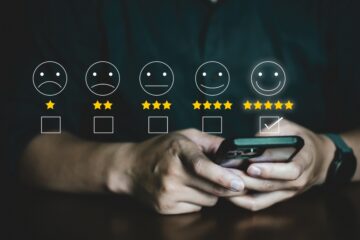Three ways digital transformation could improve goal setting within your organisation
Published by Lily Winslow on
Three ways digital transformation could improve goal setting for your organisation
KPIs, Personal Development Plans and employee objectives are all forms of goal setting with varying degrees of formal procedures built around them. This could depend on the organisation, industry or even the corporate culture. However, every organisation could benefit from considering digital transformation strategies within their goal setting processes.

What is digital transformation and why is it important?
Digital transformation is the practice of using and integrating digital technologies across an organisation or department to drive change and improvements in business processes, communications, customer experiences or company culture.
In the realm of goal setting, complex processes, confusing forms and paper-based experiences are all barriers to effective goal setting and valuable data collection.
As a learning and behaviour design agency, some of the common pain points we hear are:
- “I complete a paper-based goal setting form, hand it to my manager and never see it again.”
- “We use multiple systems for goal setting, and I can’t find the goals I set in previous years.”
- “The digital goal setting form is confusing to use.”
- “As a manager, it’s hard for me to access the goals my direct reports have set. I have to chase them individually to ask them to complete the form, the progress they’ve made and to send me their goals.”
- “As HR /L&D admin, I need to report on goal setting form completion, but the data just isn’t there.”
Digital transformation can play a huge role in improving these pain points and even eradicating them entirely. Having worked with a variety of HR teams, across a range of industries, we have thoroughly explored the ways that digital transformation can be used to improve data collection, create positive user experiences and lead to better business performance. Here are our 3 key takeaways.

Boost completion with more intuitive user experience
Goal setting can add extra weight to a person’s mental load. Setting goals requires thinking of the past, present and future simultaneously, which can have an impact an employee’s wellbeing and performance.
Cognitive load theory explains the limitations to our working memory. We can only hold so much information in our head at one time. Trying to think about too many things at once can result in cognitive overload, leaving us unable to process or recall the information properly.
Because goal setting is already a mentally heavy task it’s important to ensure the experience of completing a goal setting exercise is easy, intuitive, and clear. Even small details like extra clicks can create ‘friction costs’ that stop people from finishing (Service et al, 2014). If employees are completing time consuming paper forms or using multiple systems throughout the goal setting process, this could be creating unnecessary friction and mental load for them.
A well-designed digital goal setting experience, with simple and clear UI, that presents questions and content that are relevant to the user, personalised by role and ordered according to priority, can reduce the mental load by cutting out unnecessary noise, and making the process easier and more intuitive to complete.
Turn data into business intelligence
Digital transformation allows you to collect and use more data from the goal setting process, generating valuable business intelligence.
Tracking goal setting data against organisational measures for number of goals set, number of people setting goals and comparing it with performance data can provide a holistic view. Measuring progress of goals can also uncover potential barriers to that goal’s achievement, that may otherwise have been missed.
This data can also be used to socially influence more employees to set their own goals. For example, by using a prompt such as “85% of employees in your role have set their goals already. Log in to complete yours by Friday 20th April.”
Improve sharing between managers and employees
Once goals have been set, how are they shared and utilised? If your process is paper based, this may be physically or verbally. Maybe you have a more digital system, but it requires saving the document as a PDF and sending via email. These kinds of processes all carry a risk of losing momentum once the goals have been set.
Part of the beauty of digital transformation is being able to design more dynamic experiences and create smoother channels of communication. Choosing a purpose built, digital system that allows employees to complete and share their goals, directly within the system itself, creates a more impactful and efficient experience. Employees and managers can always access the most up to date version and reduce time spent on admin. Managers can more easily track progress, review changes and send reminders if anything falls overdue. Being able to access their goals can help keep employees motivated and engaged, while informing more valuable conversations about their future and development.
So, we can see that digital transformation of goal setting processes can benefit more than just how goals are set and stored. When designed well, a dynamic, digital goal setting process can positively impact employee performance and satisfaction.
BAD digital transformation: creating experiences that work
At BAD, we combine behavioural science with our front-end Canvas tool to create digital user experiences that drastically improve a range of HR processes, from goal setting to workspace wellness assessments.
One of our clients wanted to improve the way Continuous Professional Development information was collected across their organisation. Using our bespoke approach, we developed a new webform that reduced the completion time from 4 minutes to 40 seconds. When you add that up for every employee, that is a lot of minutes saved!
If you are interested to explore ways that your HR processes could be improved or just want to find out more about how we use behavioural science to deliver engaging, measurable experiences for organisations, get in touch with one of our team, or sign up for our newsletter.





